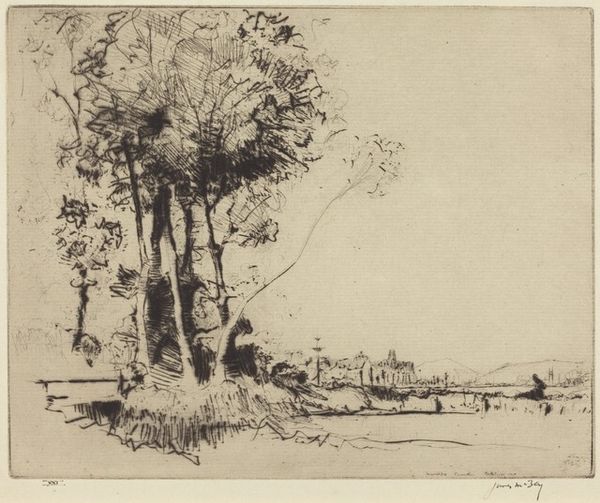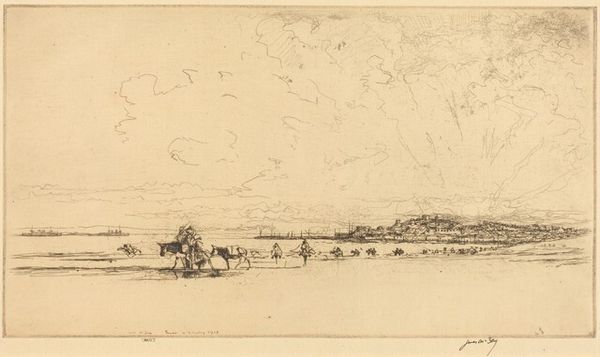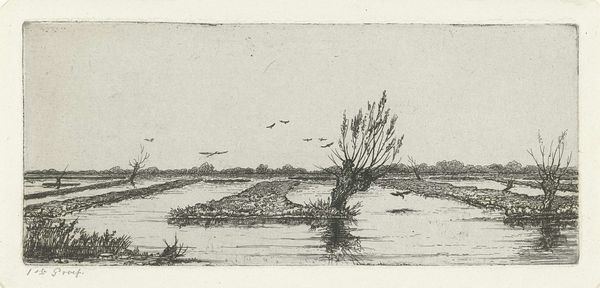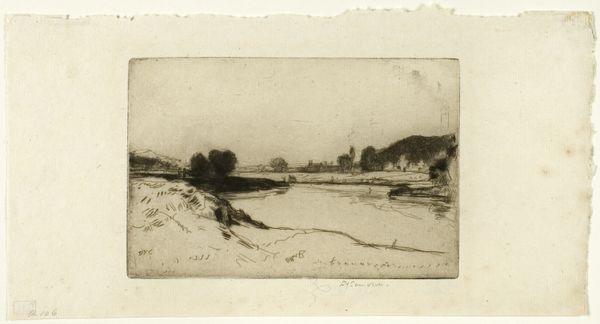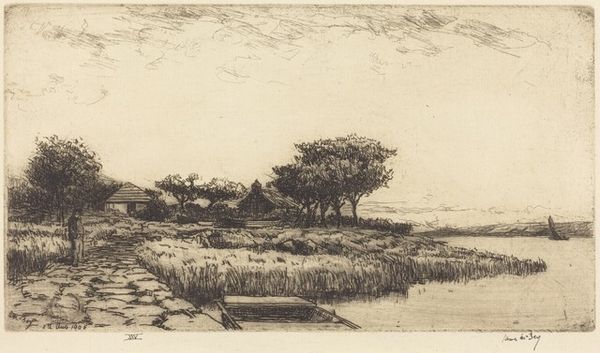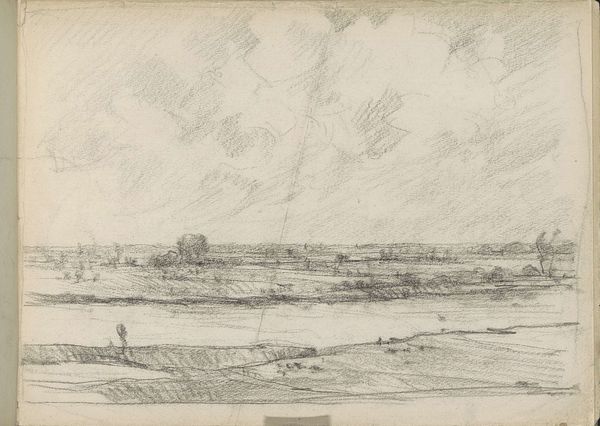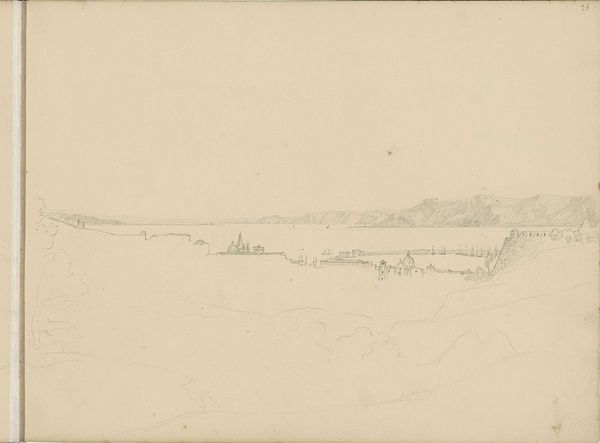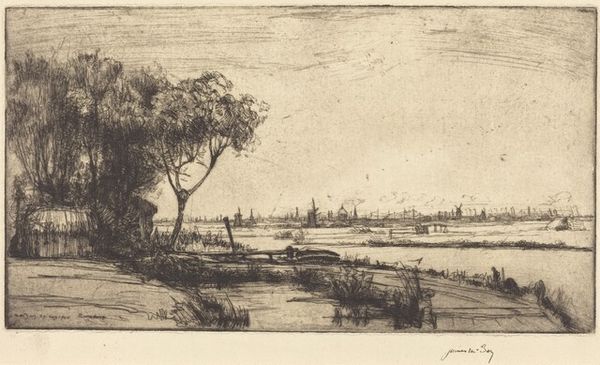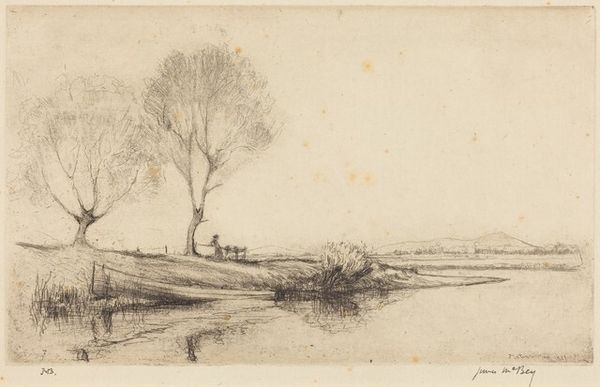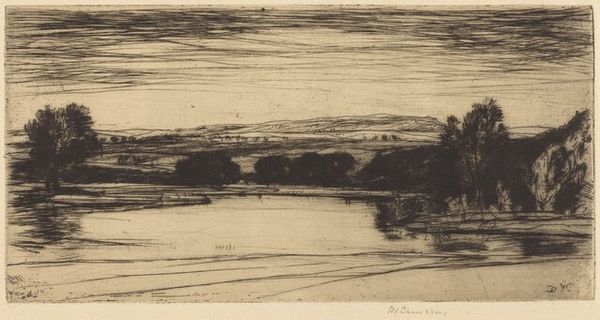
#
amateur sketch
#
light pencil work
# print
#
pen sketch
#
pencil sketch
#
old engraving style
#
personal sketchbook
#
pen-ink sketch
#
pen work
#
sketchbook drawing
#
sketchbook art
Dimensions: plate: 12.2 x 17.3 cm (4 13/16 x 6 13/16 in.) sheet: 22.7 x 28.9 cm (8 15/16 x 11 3/8 in.)
Copyright: National Gallery of Art: CC0 1.0
Editor: We are looking at Robert Austin’s "Winter Landscape, Norfolk," created in 1934. It's a print, seemingly with delicate lines. I find it very stark and still. What compositional elements strike you? Curator: Notice how the composition utilizes a strong horizontal emphasis, reinforced by the linear arrangements of the trees, the distant horizon line, and even the etched line at the bottom margin of the print. This horizontality, combined with the relatively high horizon, creates a sense of flatness and spaciousness characteristic of the Norfolk landscape itself. Editor: I see what you mean. It almost feels compressed. Does the limited tonal range contribute to this feeling? Curator: Precisely. The artist’s restricted use of tonal variation – predominantly delicate lines with little contrast – further flattens the image. What do you observe about the textures created by the lines? Editor: Well, there’s a sense of roughness in the foliage and fields. The artist is economical in their linework, especially in the sky. It also has some fine details that give a tactile quality despite being a print. Curator: Good. The economical linework in the sky highlights its uniformity. The slight variations across the print's surface enhance its tactile effect. Observe how line thickness influences depth; the varying weights create foreground interest versus the softer, flatter distance. Do you see how it reinforces the barren and stark portrayal? Editor: Absolutely. I now understand better how these elements, seemingly simple on their own, combine to create such a potent, minimalist image of a winter landscape. Thank you for pointing that out. Curator: The formal qualities, especially its delicate austerity, leave a lingering impression – more than initially apparent.
Comments
No comments
Be the first to comment and join the conversation on the ultimate creative platform.

